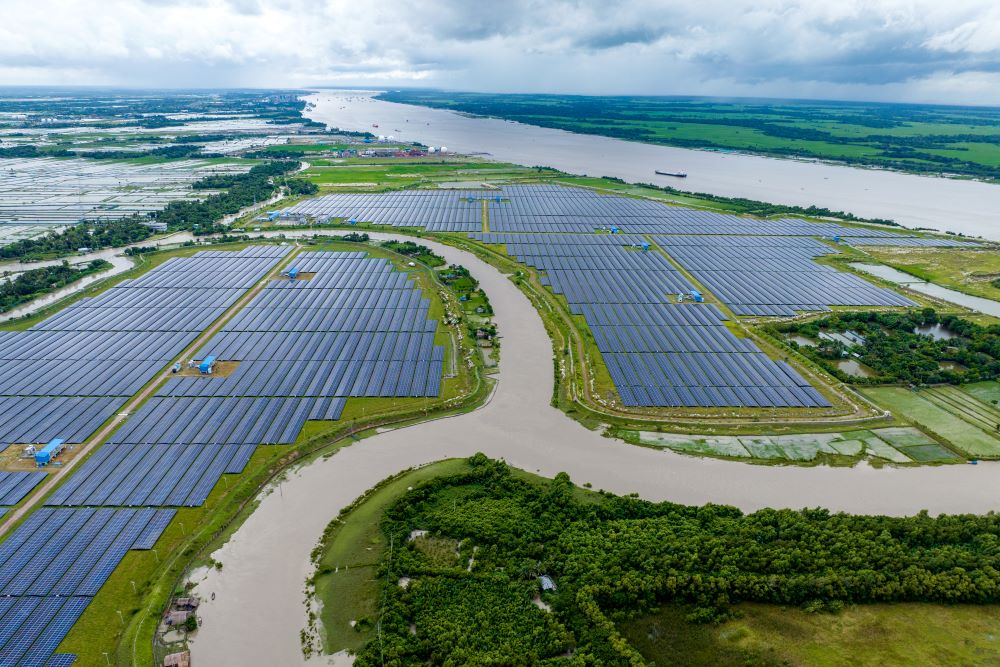Comment: Many developing countries are rich in renewable resources and growing them fast – with more investment, they can tip the balance towards green industrialisation
Vikram Singh is senior principal for the Global South with energy think-tank RMI.
If you’d asked me a month ago who was deploying renewables faster – the Global South or the Global North – I would have thought it safe to say the Global North. But, in a new RMI report published this week, we dive into the data and find a different and surprising reality: the Global South is scaling solar and wind faster than the Global North – and Latin America, for example, is adopting these technologies faster than even China.
Before going further, it’s helpful to set the scene. The Global South – which we define as Latin America, Africa, South Asia, and Southeast Asia – needs lots more energy, and it needs it fast. Per-capita energy demand in the Global South is only one-fifth of that in the Global North. Yet, on aggregate, the region has already become a net importer of fossil fuels.
Australian renewables pioneer Adelaide bids to host COP31 climate summit
Given that it has very low fossil fuel reserves per capita, under a business-as-usual scenario, the economic burden and security risks of importing expensive and volatile fossil fuels would only rise. In stark contrast, these countries are rich in renewable resources, possessing 70% of the world’s renewable potential.
Combine this energy need and political economy with the plummeting costs of clean technologies and rapid build-out of cheap, high-performing Chinese cleantech, and the motivation to move to new energy becomes clear. As we know, when incentives align, markets move. And cleantech is moving.
Cheapest, fastest way to industrialize
The progress merits highlighting: In 2024, 87% of capital expenditure on electricity generation in the Global South is set to flow into clean energy projects, up from around a half a decade ago. The International Energy Agency (IEA) anticipates new solar and wind capacity in these regions to surge by 60% this year, reaching over 70 gigawatts. Over the past five years, solar and wind power generation has been growing at an average annual rate of 23%, now supplying 9% of electricity generation.
In this new energy game, many Global South countries are showing their wealthy counterparts how it’s done. One-fifth of the Global South – from Brazil to Morocco, Bangladesh to Egypt, and Namibia to Vietnam – has already overtaken the Global North in terms of solar and wind adoption or electrification rates.
Amid the constant push to break through the immediate barriers to change, it’s all too easy to overlook the historical significance of this shift. Clean technology offers the cheapest and fastest route to industrialization in history.
The rapid growth of solar and wind energy will accelerate the growth in electricity supply, laying a foundation for faster economic development. Renewable energy frees up 40% of the Global South from spending over 4% of their annual GDP on fossil fuel imports.
Affordable and clean energy can act as a magnet for global manufacturing, as industries gravitate toward cheap energy. And for the first time, countries can develop without imposing the enormous health and economic costs associated with air pollution.
From commodities to technologies
While the proof points of rapid change have never been greater, neither has the urgency. Change is happening fast, but it is not happening everywhere, nor is it happening fast enough to meet ambitious development or climate goals.
As we approach COP29 in Baku, we must change three things to accelerate progress. First, the narrative: the cleantech revolution is not a burden to share; it is an extraordinary opportunity to boost energy access and economic growth. We are shifting from an expensive, inefficient, volatile, scarce, commodity-based fossil system to cheaper, cleaner, leaner technologies that offer continuously falling costs and are available everywhere.
To capture renewable energy gains, Africa must invest in battery storage
Second, Nationally Determined Contributions (NDCs) and domestic policy more broadly need to reflect this new economic reality. They can serve as credible investment plans that signal ambition and clarify financial needs. As we highlight in the report, more policy ambi
Read More

